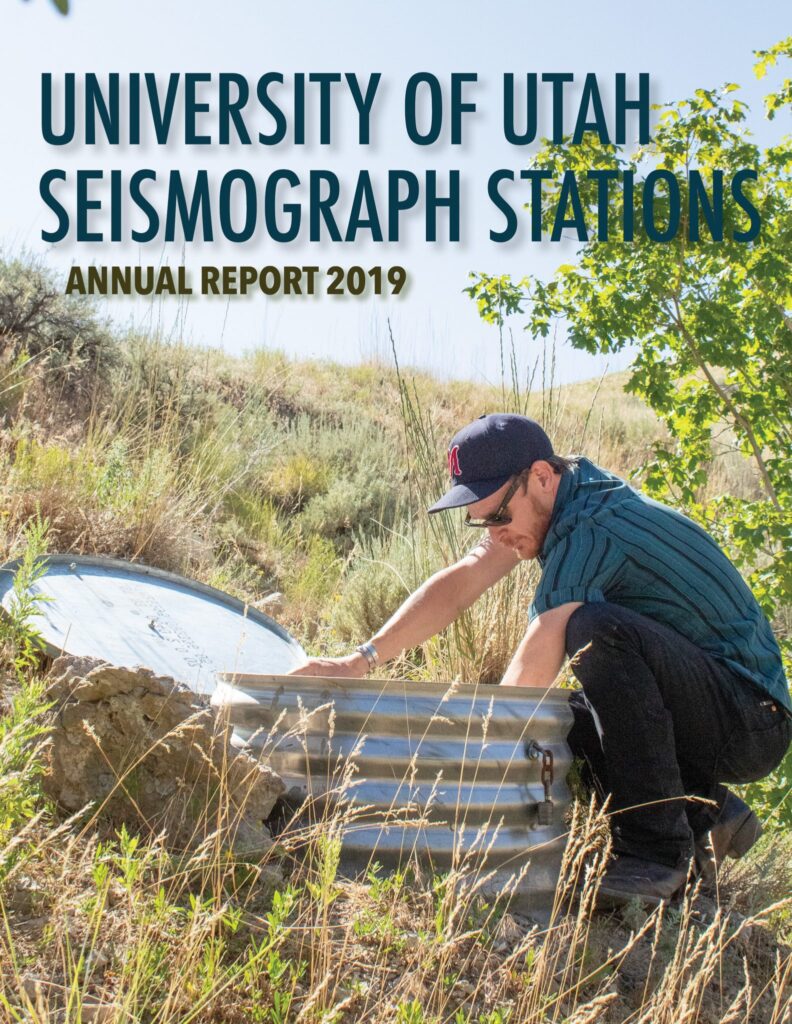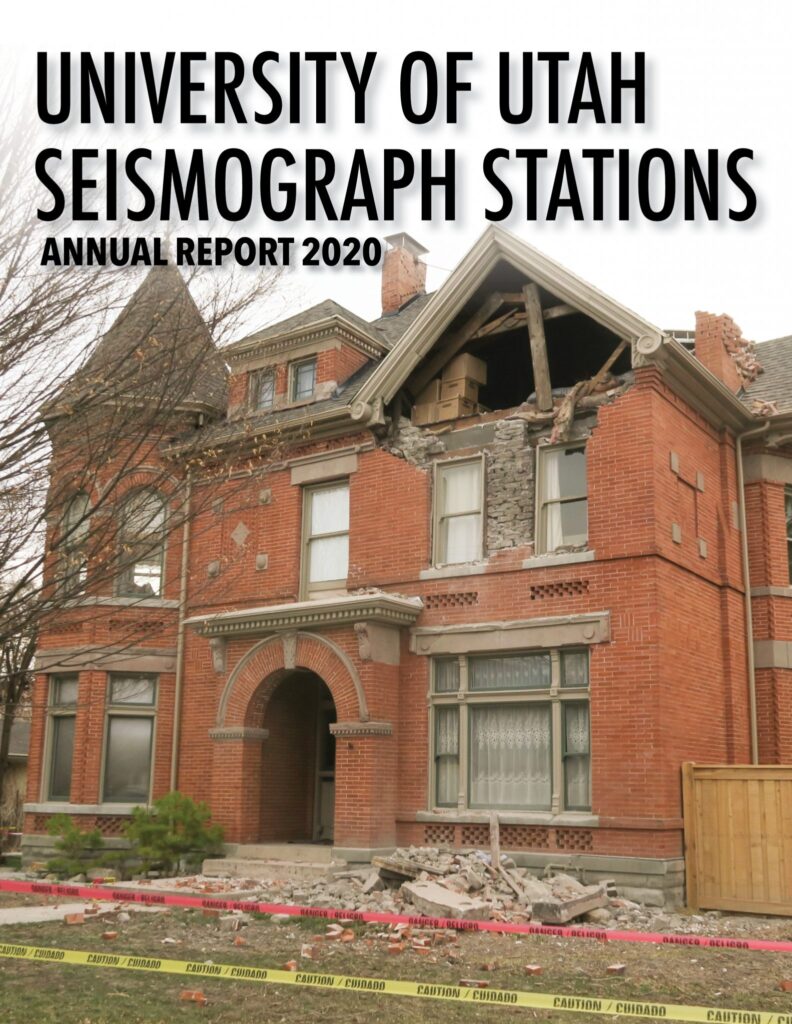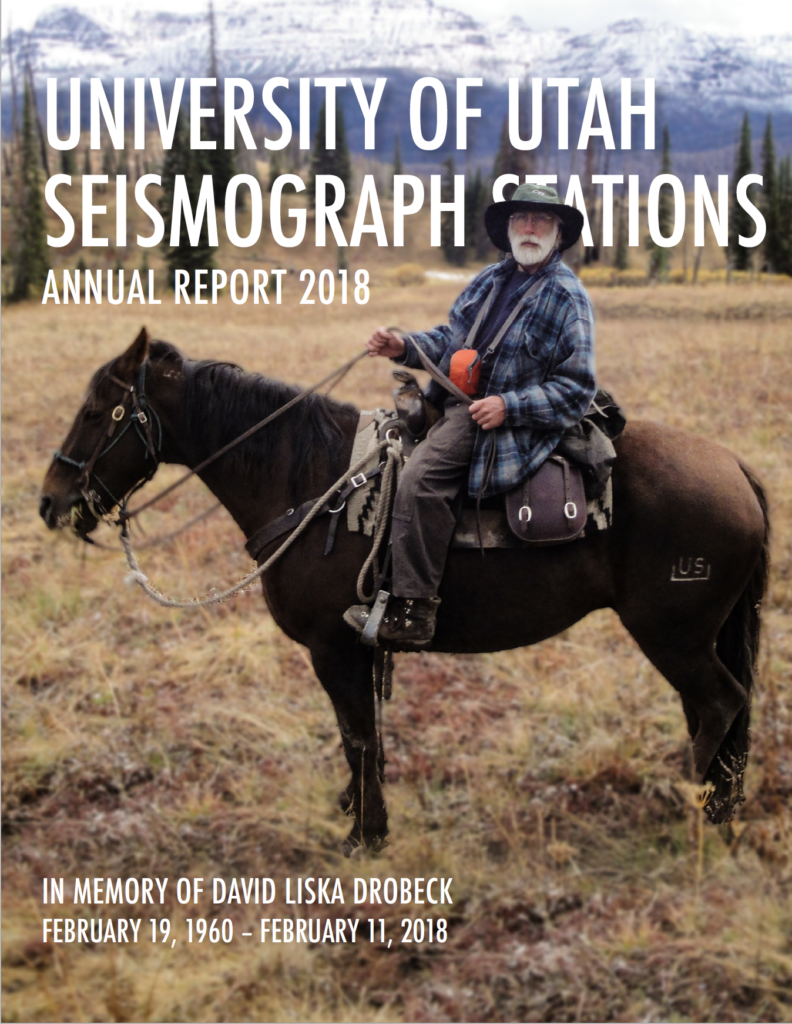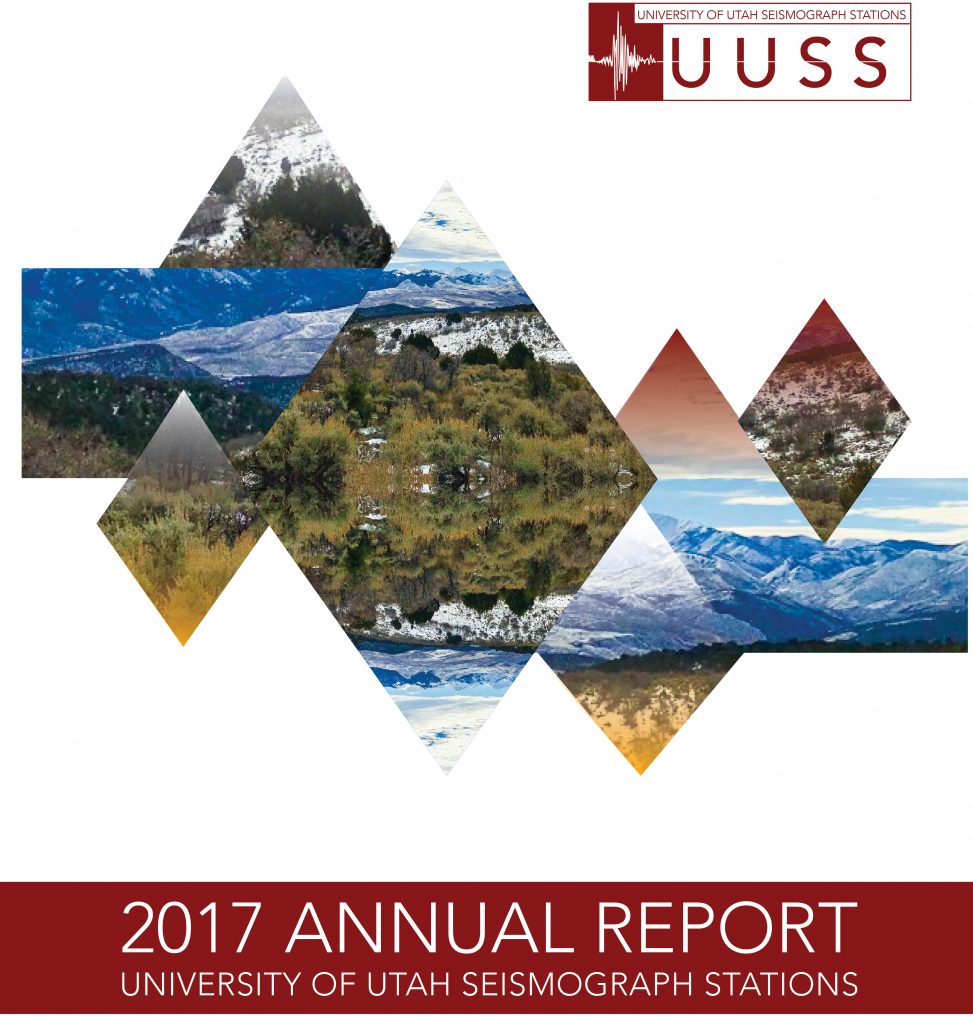UUSS Annual Reports
-
2020 was an unprecedented year in many ways. University of Utah Seismograph Stations was thrown into the thick of things by not only dealing with the COVID-19 pandemic but also responding to the largest Utah earthquake to occur since 1992.
The pandemic impacted our operations by causing us to work-from-home among other things. There were also complications in working out how to safely conduct field work and research. Overall, UUSS was able to rise to the challenge and quickly adjust to all the changes.
After our first-full day of working-from-home, Utah experienced its largest earthquake since 1992. The March 18, 2020 moderate M5.7 earthquake shook the Wasatch Front and brought a lot of attention to UUSS and our operations, especially as felt aftershocks continued to shake the public for months. We remained busy throughout the year because of the sequence. In a way, the Magna earthquake was a validation of the importance of the work we accomplish and a reminder that Utah is earthquake country.
The Magna, Utah, earthquake sequence provided substantial opportunities for research. Our staff and students worked on several different projects regarding the sequence. Research included documenting how we responded to the earthquake during a pandemic, evidence for a listric Wasatch Fault, and monitoring the sequence with nodal seismometers and machine learning.
Several of the Magna specific projects will be featured in a special issue of Seismological Research Letters that will focus on 2020 Intermountain West earthquakes. The special issue will be published in March 2021.
We’re grateful to call 2020 a successful year even through all the challenges it provided. Our staff and students worked hard and accomplished incredible things. We expect even greater accomplishments in 2021.
Keith D. Koper, UUSS Director
-
 2019 was an exciting year for the University of Utah Seismograph Stations. We welcomed new students and staff, had an earthquake sequence widely felt in the Salt Lake Valley, and were involved in several interesting research projects.
2019 was an exciting year for the University of Utah Seismograph Stations. We welcomed new students and staff, had an earthquake sequence widely felt in the Salt Lake Valley, and were involved in several interesting research projects.We welcomed several new faces to our team. Dr. Ben Baker joined us as a research scientist and co-taught a new course “Statistical Applications to Earthquake Seismology” with associate director Kris Pankow, to great student reception. We also gained full-time communications specialist Rebecca Sumsion. UUSS brought on two postdoctoral research associates: Dr. Maria Mesimeri and Dr. James Holt. They’ve been a great contribution to important research projects.
At the beginning of the year, there was excitement in Bluffdale, Utah, at the south end of the Salt Lake Valley where an earthquake sequence took place between February – April. The event generated a lot of public interest since the sequence occurred in a densely populated area. UUSS received a lot of media attention and we participated in several interviews for local news networks and newspapers.
We’re proud of the many graduate and undergraduate students we have working for us. 2019 brought a lot of opportunity for great student-led research projects. Research projects included investigating the fault location of the Bluffdale sequence, earthquakes that occurred around the Utah FORGE seismometer deployment and an intriguing swarm near the San Rafael Swell.
We are excited to announce that we joined the International Seismological Centre and are looking forward to the exposure this opportunity will provide. UUSS also joined in celebrating the 25th anniversary of the Utah Seismic Safety Commission at the state capitol.
2019 closed with the annual American Geophysical Union fall meeting. UUSS had a strong representation and were included in several presentations. I’m proud of the work we do and look forward to more opportunities in 2020.
Make sure to follow us on social media: @uussquake on Twitter and Instagram and @UUSeismographStations on Facebook.
Best Wishes, Keith D. Koper, UUSS Director
-
2018 was an especially difficult year because of the unexpected death of Dave Drobeck on February 11. Dave served the University of Utah Seismograph Stations (UUSS) for over 20 years and was instrumental in developing the Yellowstone Seismic Network into one of the premier volcano monitoring networks in the world. Dave’s loss was especially hard on the UUSS engineering group—Corey Hatch, Wes O’keefe, and Jon Rusho—who had to take up extra work duties while grieving the loss of their colleague. A summary of Dave’s career was presented by Bob Smith at a ceremony on February 22, and is reprinted in this report.
While someone like Dave can never truly be replaced, I am happy to report that a former UUSS undergraduate research assistant, ArvindParapuzha, agreed to return to UUSS as a seismic engineer trainee in May, and that Wes O’keefe worked his first full field season in Yellowstone this past fall. On July 1, long-time seismic analyst Mark Hale was promoted to senior application systems analyst. Congratulations, Mark!
The biggest highlight of 2018 was the June 14 announcement that the University of Utah had been selected to receive a $140 million grant from the Department of Energy to develop the Frontier Observatory for Research in Geothermal Energy (FORGE) site near Milford, Utah. The selection was due in no small part to the effort of UUSS associate director Kris Pankow and her team of students and staff, who created a seismic mitigation plan for the project. Dr. Pankow will continue managing the FORGE seismic risk as work ramps up over the next several years.
We look forward to an exciting new year in 2019. I encourage you to visit our revamped web page at quake.utah.edu to stay up-to-date on our new initiatives and products as well as to find out about the latest seismic activity in Utah. You can also follow UUSS on Twitter with the handle @UUSSQuake.
Best wishes,
Keith D. Koper, UUSS Director
-
I am happy to report the University of Utah Seismograph Stations (UUSS) had another exciting and productive year in 2017. Thanks to all of you who support and promote our mission of reducing the risk of earthquakes in Utah through research, edu- cation, and public service.
An Mw 5.3 earthquake on Sept. 2, 2017, in southeastern Idaho reminded us that we absolutely do live in earthquake country. Thankfully, this earthquake caused little damage, but its shaking was felt throughout northern Utah, as far south as Provo. UUSS responded to the earthquake by partnering with the U.S. Geo- logical Survey and the Idaho Geological Survey to deploy a tem- porary array of seismographs in the source region. Using these data, we detected and located over 1,000 aftershocks in the two months following the mainshock. This allowed us to map out a previously unknown fault system.
UUSS also recorded enhanced seismicity in Yellowstone Na- tional Park during 2017. Between June 12 and Sept. 30, a swarm of over 2,400 earthquakes was recorded in the Maple Creek re- gion of Yellowstone. The largest event in the swarm was an Mw 4.4 earthquake on June 15 that was widely felt throughout the park. Although earthquake swarms in Yellowstone are common, this was the second longest swarm ever recorded. Yellowstone earthquake swarms are often related to the movement of fluids in the crust and usually do not portend a volcanic eruption; howev- er, it remains important to monitor them closely.
In 2017, UUSS continued working with the University of Utah team vying to host the Frontier Observatory for Research in Geo- thermal Energy (FORGE). This project is sponsored by the U. S. Dept. of Energy and aims to build a facility for developing tech- nologies related to enhanced geothermal energy production. The UUSS FORGE effort is led by Prof. Kris Pankow and is focused on quantifying the seismic hazard near the proposed FORGE site in Milford, Utah. Utah is one of two finalists for this project, and the winner will be announced in 2018.
We look forward to another exciting year in 2018. I encourage you to visit our web page at quake.utah.edu to stay up-to-date on our initiatives and products as well as to find out about the lat- est seismic activity in Utah and Yellowstone. You can also follow UUSS on Twitter with the handle @UUSSquake.
Best wishes, Keith D. Koper



